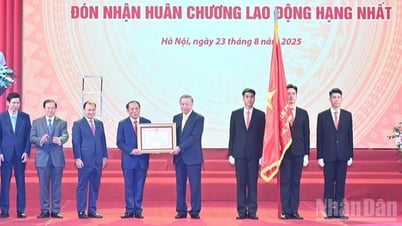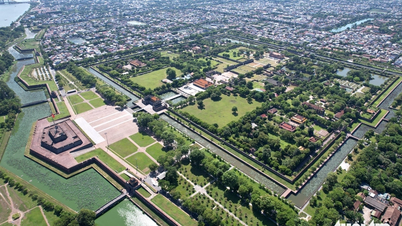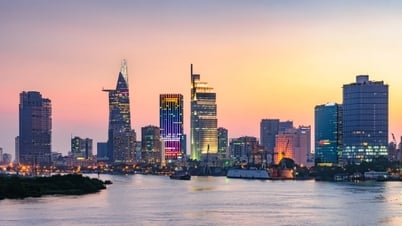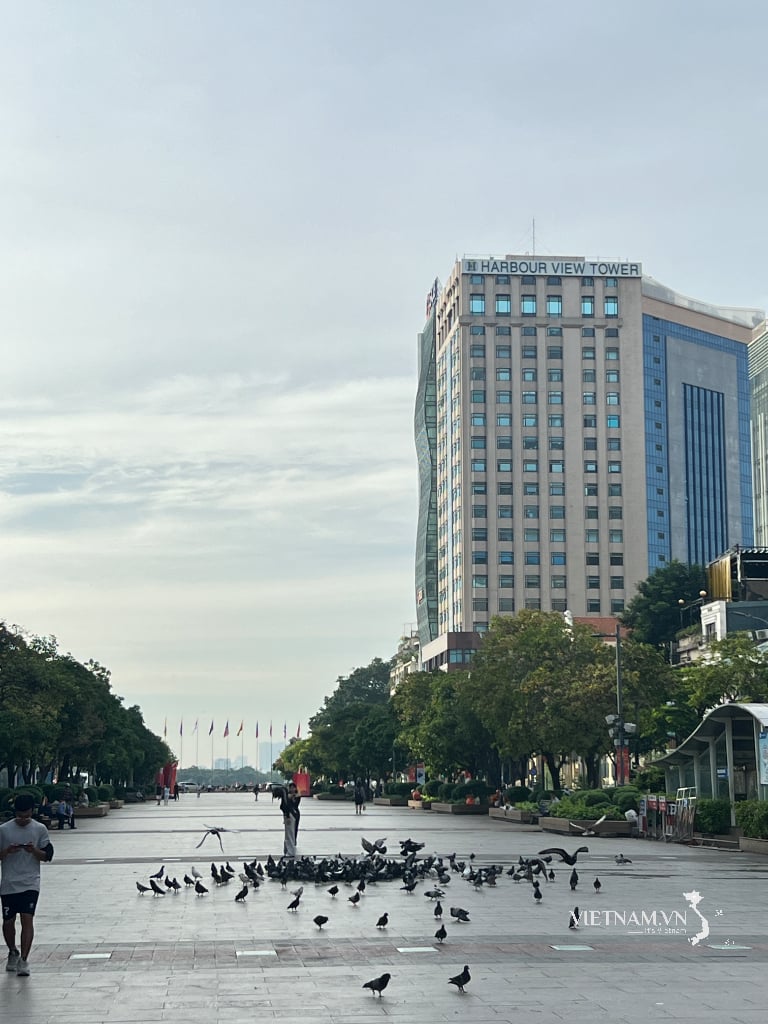The report of the Party Committee of the Ministry of Finance at the first Congress of the Party Committee of the Ministry of Finance set out a number of notable targets. Among them, striving for an average GDP growth rate of 10% or more per year, with GDP per capita reaching 8,500 USD by 2030.
This is an unprecedented growth rate in Vietnam's history. It reflects the aspiration to rise, but at the same time is also a measure of the country's reform spirit and governance capacity.
From Innovation to a New Position on the World Economic Map
After nearly 40 years of Renovation, Vietnam has transformed dramatically. From a single-sector economy, we have opened up, empowered businesses and people, and gradually entered the market orbit.
In 2025, GDP is estimated to reach 510 billion USD, ranking 32nd in the world and 4th in ASEAN. If calculated by purchasing power parity (PPP), GDP will reach 1,760 billion USD, ranking 25th globally.

During the 2026–2030 period, Vietnam is expected to attract 200–300 billion USD in registered FDI capital, implement 150–200 billion USD, and increase the localization rate to over 40%. Photo: Vo Viet
Per capita income increased from 3,552 USD (2020) to about 5,000 USD (2025), GNI per capita reached 4,750 USD, officially surpassing the lower middle threshold. Vietnam is also among the 20 countries with the largest trade scale in the world, and is an attractive destination for FDI capital flows.
Most importantly, poverty reduction has become one of the rare achievements in the world: from 60% of poor households in 1986 down to 1.9%.
Every time they are untied, businesses and people prove their ability to change the country.
“Double digit” target
Over the past two decades, average annual GDP growth has been only about 6.4%. Vietnam has never reached double digits.
Setting a target of 10% means we are forced to go differently, beyond what is familiar. As Deputy Prime Minister Nguyen Chi Dung said: “Without a new and bold approach, this target will never be achieved.”
The report of the Party Committee of the Ministry of Finance also pointed out a number of remaining problems. First of all, the need for huge investment capital. A growth rate of 10% requires a strong increase in public investment, private investment and FDI. If public investment is too high, it will crowd out the private sector; external borrowing will face interest rate barriers and trade risks; and tax increases will inhibit consumption.
Next is low productivity. To reach 10%, total factor productivity (TFP) must account for 50.3% and increase by 5.2% per year, much higher than the previous period. If TFP only reaches the old level (about 3%), GDP will fall by 3-5 percentage points.
Third, domestic consumption is weak. People's spending is not strong enough to drive growth, while state consumption is difficult to compensate.
A major issue that needs attention is inflation. The average deficit of 5% of GDP and a sharp increase in public spending can easily push inflation beyond the 4-4.5%/year target. In addition, there is the problem of electricity and energy. A 10% growth leads to an increase in electricity demand of 1.4-1.6 times GDP.
Without a solid energy strategy, the entire growth scenario will be hampered. And finally, industry has not yet taken off. Production is mainly outsourced, with low localization and loose FDI-domestic linkages. Key industries such as mechanics, new materials, and defense industry are still slow.
Institutional bottlenecks and endogenous capacity
The biggest problem is not capital, but institutions. Figures show that the non-state economic sector accounts for more than 50% of GDP, but the officially registered business sector accounts for less than 10%. That means the economy still relies heavily on small households, street vendors, and small craft villages.
The goal set by 2030 is to have 2 million operating enterprises, the private economy growing at 10-12%/year, at least 20 enterprises participating in the global value chain, 50 state-owned enterprises in the Top 500 of Southeast Asia and 1 enterprise in the Top 500 of the world.
But how can this be achieved when a real estate project still requires 40 seals, when the business conditions are still nearly 16,000?
How to release 2,887 stuck projects, with a total investment capital of up to 235 billion USD and land area of up to 347,000 hectares nationwide for development?
If the institutions do not change, private enterprises - the endogenous pillar - will find it difficult to develop, and the economy will forever rely on cheap labor and processing.
During the 2026–2030 period, Vietnam is expected to attract 200–300 billion USD in registered FDI capital, implement 150–200 billion USD, and increase the localization rate to over 40%.
This is not a small goal. But more importantly, how to make FDI become the driving force to pull domestic enterprises to develop together.
If we want Vietnamese businesses to enter the world's Top 500, we need to create conditions for private corporations to grow domestically, instead of relying solely on FDI.
The only way: Rely on people and businesses
President Ho Chi Minh once advised: “Whatever is beneficial to the people must be done, whatever is harmful to the people must be avoided.” In today’s context, “relying on the people” is to untie businesses and awaken the internal strength of society.
Institutional reform needs to thoroughly eliminate cumbersome procedures and unreasonable business conditions; make land and credit transparent; ensure fair competition. Private enterprises must become the mainstay.
To achieve 10% growth, we need a strong private sector to lead the way. New momentum must come from green transformation, circular economy, semiconductors, artificial intelligence, renewable energy, new materials – industries that create great added value.
Property rights and contractual commitments need to be protected. Businessmen who owe taxes should not be restricted from leaving the country. And many other obstacles need to be removed.
Along with that is a long-term energy strategy, developing renewable electricity, transmission infrastructure and energy security one step ahead.
Finally, macroeconomic stability must be maintained, with inflation around 4-4.5%, budget deficit 5% of GDP, public debt 45% of GDP - a difficult problem but one that must be steadfastly solved.
Destination 2030
The target of $8,500 GDP per capita by 2030 means Vietnam must double its income within five years – an unprecedented task.
According to the World Bank, of the more than 100 middle-income countries that have been in the middle since the 1960s, only 13 have managed to escape the “middle-income trap” and move up the income ladder. That means the path is narrow, but not impossible.
The prerequisite is to thoroughly reform institutions, improve productivity and unleash the full potential of businesses and people.
Celebrating the 80th anniversary of the founding of the nation, we not only recall the past, but also answer the question of the present: How is Vietnam pursuing the 10% target?
If we are determined to reform, we have the opportunity to become one of the few countries to rise to the high-income group.
10% growth is a dream, but also a test for today's generation. The answer lies in removing constraints, empowering people and businesses, to continue the 80-year journey with a future worthy of our people and country.
Vietnamnet.vn
Source: https://vietnamnet.vn/tang-truong-10-giac-mo-hay-muc-tieu-kha-thi-2435114.html








![[Photo] General Secretary To Lam attends the 80th Anniversary of the Cultural Sector's Traditional Day](https://vphoto.vietnam.vn/thumb/1200x675/vietnam/resource/IMAGE/2025/8/23/7a88e6b58502490aa153adf8f0eec2b2)




























































































Comment (0)